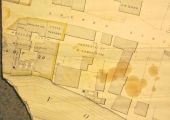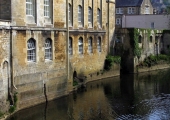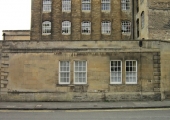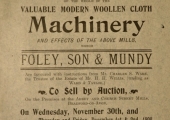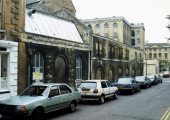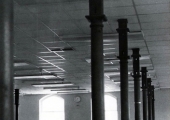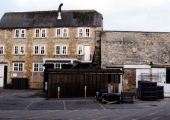.
Abbey & Church Street Mills
Church Street, Bradford on Avon, Wiltshire
.

.
Downstream from the weir that provided power for the Greenland and Kingston Mills, a group of woollen cloth factories developed in Church Street between the Town Bridge and Holy Trinity Church- Bullpit, Church Street and Abbey Mills. Originally a miscellaneous collection of workshops, they developed piecemeal into larger factories, perhaps taking the place of older houses. They were the home of two industries that were important in Bradford on Avon’s history -woollen cloth and rubber manufacture- and are now no more.

The original Abbey Mill factory building in about 1850. The tall block on the left was built in the first couple of decades of the 19th century. It is said to have been visited by the Duke of Wellington in about 1820. In 1824 it was purchased by the partnership of Yerbury, Tugwell & Edmonds and from 1833 both Abbey and Church Street Mills were run in conjunction by Ezekiel Edmonds & Co. until they became bankrupt in 1862. Both mills were vacant in 1865. From 1869 t0 1898 they were run by a succession of short-lived and related partnerships: Harper & Taylor; Harper, Taylor & Willis; Ward, Taylor & Willis and H.H. Willis. The mills and their machinery were offered for auction in 1898 after the death of Willis and 1902 cloth manufacture ceased with all the plant auctioned by a Yorkshire company, followed by the closing of Greenland Mills the following year. There was a brief period in which part at least of the buildings was used by the rug company of Budbury.
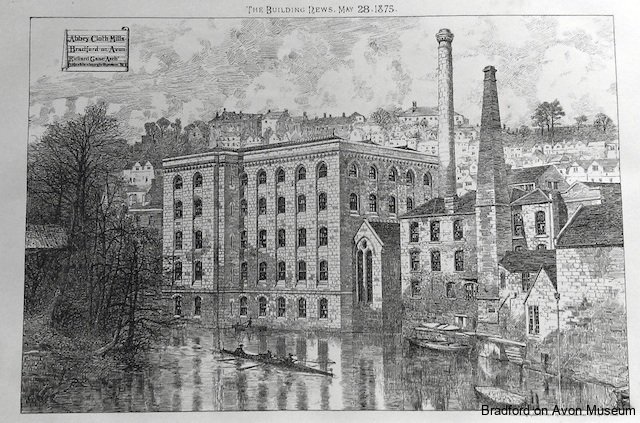
The western mill buildings were substantially rebuilt in 1874-5 into a square block that provided a greater floor area for machinery. The architect was Trowbridge-born Richard Gane of a Bath firm.
Abbey Mill was used as a billet for Australian soldiers in the First World War and was taken over by the expanding George Spencer, Moulton Rubber Company in 1915, but it didn’t seem to have purchased the mills until 1926. Rubber components were made there by the company, continued under Avon Rubber from 1956, converted to offices for the company by architects Thurlow Lucas & Janes and closed in 1995.
The mill complex was converted to retirement housing in 1997 by Girlings Retirement Rentals Ltd, designed by BBA architects of Bath).
For more detail see the booklet Abbey Mill by David Gazard and published by the Museum.


